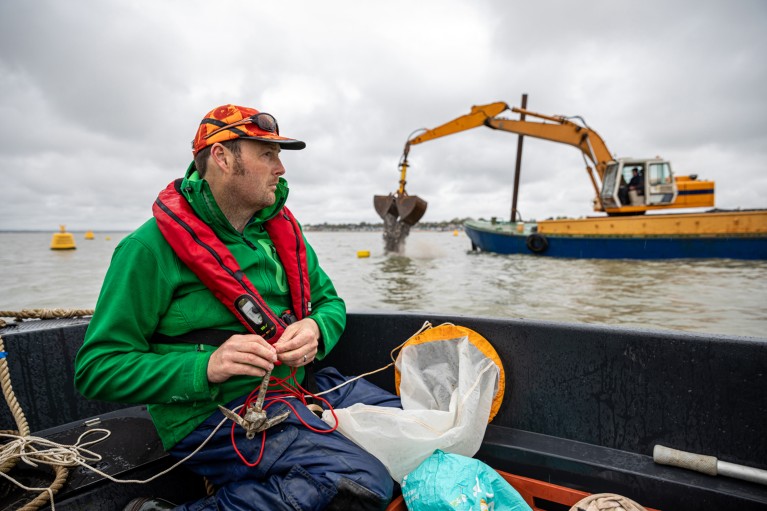For the past five years, I’ve studied oysters — a commercially and environmentally important species in southeast England. My research is very practical: I help to solve problems by working with oyster growers (known locally as oystermen), regulators and other community members. Resulting papers are evidence of work I’ve already done.
Most oysters in this area are a non-native species (Crassostrea gigas). Locally, it’s well established and has been since the 1960s, but allowing it to spread to nearby estuary systems has been controversial: there are concerns that it could become an invasive species.
Working with aquaculture producers, I help to guide efforts to restore the native oyster (Ostrea edulis), populations of which declined owing to overfishing, habitat destruction, pollution and disease. Crassostrea gigas oysters have provided enough income for oyster growers to spend time and effort restoring the local species. We’ve done some cool things, including creating one of the largest coastal marine conservation zones in the United Kingdom — more than 284 square kilometres — and all for an unseen brown invertebrate that lacks the charisma of a dolphin.
This picture is from a typical day in the field. During high tides, we go out in a boat to take sonar readings to map potential oyster habitats; at low tide, we put on waders and go out on the mud flats to look for juvenile oysters. We focus our conservation efforts on spots where juvenile oysters are already trying to get established.
Amazingly, these filter feeders don’t require feeding by humans, and they clean the water as they grow. Bivalve aquaculture such as this has become a cornerstone of the ‘blue economy’ — using marine resources sustainably for economic growth while preserving ocean health. It will take more work to determine how the balance can be reached, but oysters will be part of that conversation.


 How AI is helping the natural sciences
How AI is helping the natural sciences
 Breeding the sweetest biofuels in the business
Breeding the sweetest biofuels in the business
 Using sound to explore events of the Universe
Using sound to explore events of the Universe


